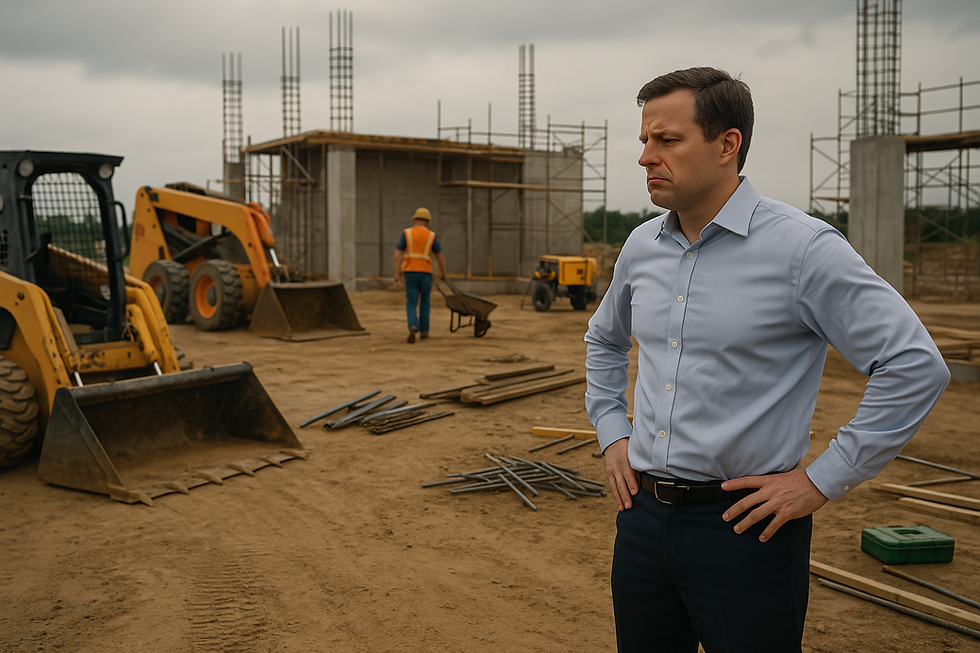Solving the Retention Puzzle: How Employers Can Keep Their Workforce – and How the Right Support Makes All the Difference
- Darcy J. Daoust
- Apr 9
- 4 min read

In today’s labour market, employee retention has become one of the most pressing issues for employers—especially in industries like construction, trades, mechanic shops, and the service sector. High turnover isn’t just a hiring problem—it disrupts productivity, drains morale, frustrates clients, and eats into profits.
As a former labour and employment lawyer turned human resources consultant, I’ve worked with businesses from all walks of life. And as someone who has also spent time working in the trades, I’ve seen these issues play out not just in boardrooms, but on shop floors and job sites. Whether in a professional office or on a construction crew, the message is the same: how people are treated, supported, and set up for success directly impacts whether they stay—or leave you hanging.
Why Employees Leave (And Why They Stay)
Most employees don’t quit over one big thing—they leave because of a buildup of small, everyday frustrations. Often, it’s not just about wages or benefits (though those matter). It’s about how they’re treated on a regular basis and how well (or poorly) they were set up for success from day one.
Key issues I’ve seen time and again—both in professional settings and in the trades—include:
Poor or unclear communication from supervisors
Feeling underappreciated or disrespected
No clear understanding of the job from the start
Lack of consistency or fairness in how rules are applied
No sense of job security or pathway for growth
Little recognition for hard work
The good news? These are all fixable—with the right mindset and support.
Where Retention Really Starts: Before Day One
Retention doesn’t begin on the first day of work—it starts with the job posting.
Post with Purpose: A clear job posting that outlines not only duties and qualifications but also expectations around schedule, pace of work, physical demands, and team culture helps filter in the right candidates and filter out the wrong ones. Vague job ads lead to mismatched hires—and high turnover.
Interview with Intention: Taking time to interview properly, ask thoughtful questions, and be transparent about the role helps you build trust early. Rushed hiring leads to mismatched expectations on both sides and can ultimately lead to an employee leaving at a time where she/he may be needed the most.
Offer Fair Compensation: Proper pay and well-structured remuneration packages are not a luxury—they’re essential. Skilled tradespeople, technicians, and service workers are in demand, and if you don’t pay competitively, someone else will.
Onboard (worksite / job orientation) with Clarity: Onboarding is not just paperwork. New employees need a clear introduction to their role, safety protocols, expectations, and workflows. If they’re forced to “figure it out” on the fly or face constantly changing rules, frustration builds fast—and so does turnover.
Practical, Day-to-Day Strategies That Work
In my experience—across industries, from offices to shops to sites—small, consistent actions make a world of difference:
Support, Don’t Belittle: How supervisors speak to employees matters. Yelling, sarcasm, or public criticism drives good workers away and does not create confidence in clients. A supportive approach—one that corrects issues respectfully and encourages growth—builds loyalty and mutual respect.
Open Lines of Communication: Regular, two-way communication between managers or site supervisors and workers creates trust. Whether it's a quick morning huddle or checking in at the end of the day, showing you’re listening can uncover small problems before they become big ones.
Create Safety, Not Fear: Employees should feel safe—not just physically, but emotionally. That means having clear harassment and respect-in-the-workplace policies and actually enforcing them. It also means creating a space where workers feel comfortable raising concerns without fear of retaliation.
Recognize Hard Work: Bonuses, proper wages, and regular raises tied to performance are foundational. But appreciation also comes in smaller forms—pizza days after a tough week, Christmas parties, gift cards, even a simple “thank you.” These gestures are inexpensive, but they go a long way.
Build a Culture of Respect: In certain industries where there is less control of the overall workforce on site (i.e. construction sites with many different trades), the culture can be rough around the edges—but that doesn’t mean disrespect should be the norm. Respectful leadership sets the tone for the entire workplace and creates a space people want to come back to every day. If managers and their workforce create an atmosphere of respectful that example tends to seep into the entire workplace.
Lead by Example: Owners and site supervisors who lead by example—who show up, stay calm under pressure, and treat everyone fairly—earn trust and loyalty from their teams. That’s something money alone can’t buy.
Where I Come In
With my legal background, I help businesses protect themselves and stay compliant. But more than that, as an HR consultant, I work with owners and managers to create practical systems for communication, hiring, onboarding, feedback, and performance—systems that actually work for small and medium-sized teams.
Having worked on both the professional side and in trades environments, I understand the unique challenges in each. That’s why my approach is realistic, hands-on, and built to work in the real world—not just on paper.
Final Thoughts: Your Business Is Only as Good as the People In It
Retention isn’t just about policies—it’s about people. It’s about how employees feel when they show up to work: Do they understand their role? Do they feel safe? Are they respected? Are they appreciated?
When businesses get these foundational pieces right—from the first job posting to everyday workplace culture—they don’t just reduce turnover. They save money, avoid service disruptions, and keep their clients happy. That leads to stronger teams, more contracts, better reputations, and far fewer headaches trying to staff up at the last minute.
If you’re ready to build a team that sticks—and one that delivers work you're proud of—I can help you put the right tools and culture in place.





Comments